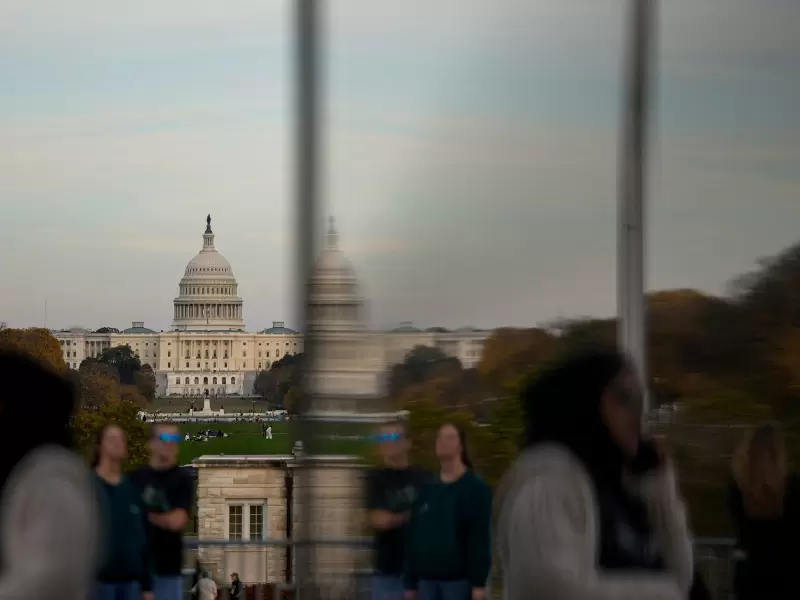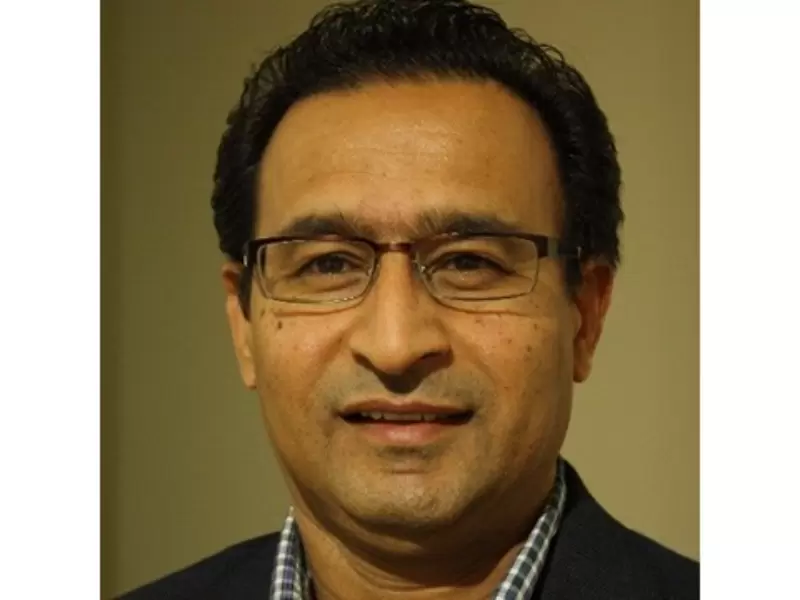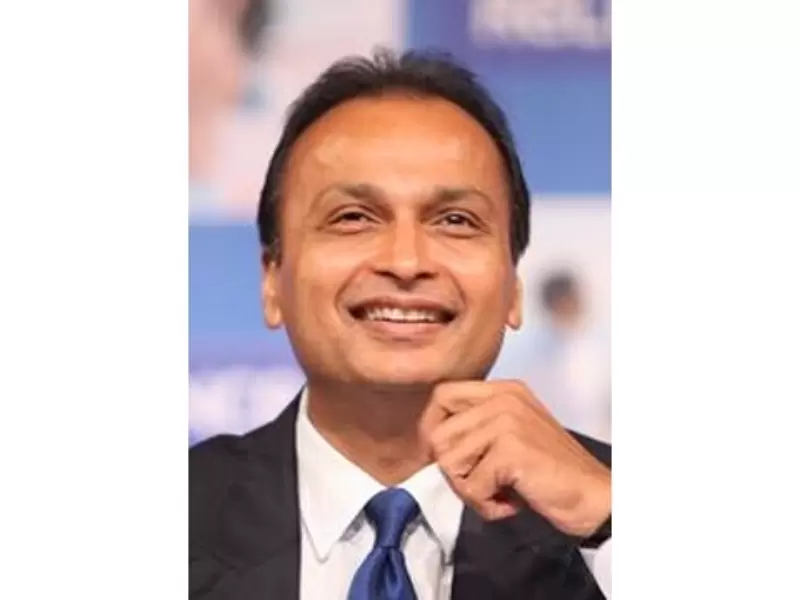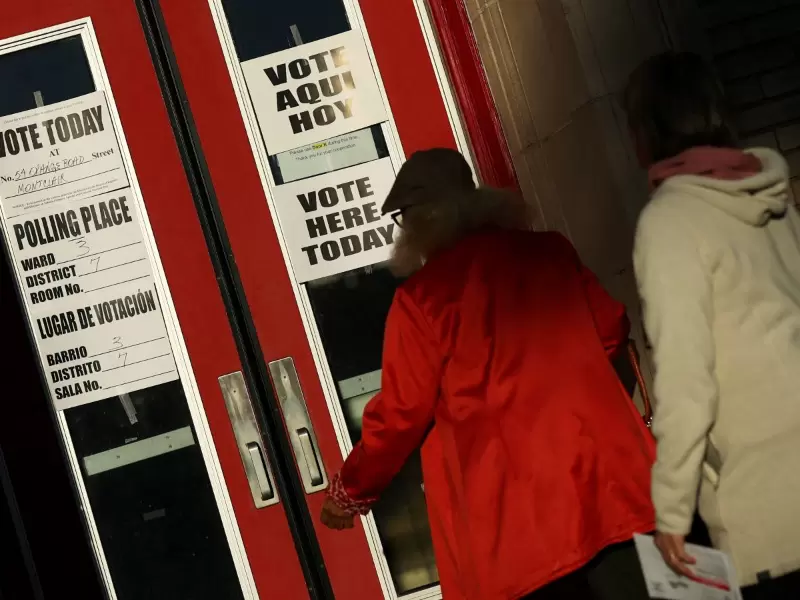US government shutdown ties record, as congressional inaction takes toll
The Senate has voted more than a dozen times against a House of Representatives-passed stopgap funding measure, and no lawmakers have changed their position.
 FILE PHOTO: People visit the Washington Monument, more than a month into the continuing U.S. government shutdown in Washington, D.C., U.S., November 2, 2025. / REUTERS/Kent Nishimura/File Photo
FILE PHOTO: People visit the Washington Monument, more than a month into the continuing U.S. government shutdown in Washington, D.C., U.S., November 2, 2025. / REUTERS/Kent Nishimura/File Photo
The U.S. government shutdown on Nov. 4 entered its 35th day, matching a record set during President Donald Trump's first term for the longest in history, as Republicans and Democrats in Congress continue to blame each other for the standoff.
The toll increases by the day. Food assistance for the poor has been halted for the first time, federal workers from airports to law enforcement and the military are going unpaid, and the economy is flying blind with limited government reporting.
The Senate has voted more than a dozen times against a House of Representatives-passed stopgap funding measure, and no lawmakers have changed their position. Trump's Republicans hold a 53-47 majority in the Senate but need votes from at least seven Democrats to meet the chamber's 60-vote threshold for most legislation. Democrats are withholding their votes to extract an extension of some healthcare insurance subsidies.
Also Read: An Obama-appointed judge's 'roadmap' could help Trump win Supreme Court tariffs case
"The victims of the Democrats’ shutdown are starting to pile up," Republican Senate Majority Leader John Thune said on Nov. 3. "The question is how long are Democrats going to continue this. Another month? Two? Three?"
His Democratic counterpart, Chuck Schumer, on Nov. 3 pointed out how Trump's attention has been focused elsewhere.
"While Donald Trump is bragging about remodeling bathrooms at the White House, Americans are panicking about how they will afford healthcare next year," Schumer said, referring to a remodeling Trump unveiled on Oct. 31.
A shutdown unlike its predecessors
The increasingly polarized Congress has made shutdowns and threats of them more common in recent decades. But the 15th shutdown since 1981 stands out not just for its length. It has inverted the normal partisan dynamic in which shutdowns have often been provoked by Republicans.
In addition, little effort has been put into ending this latest shutdown. The House has been out of session since Sept. 19, and Trump has repeatedly left Washington.
"The political climate and the tensions that exist between the parties were so wide at the beginning of the shutdown, and even though bipartisan talks have continued through it, remain at this point still just as wide," said Rachel Snyderman, managing director of economic policy at the Bipartisan Policy Center.
Food assistance for approximately 42 million Americans in the SNAP program ran out on Nov. 1. Many families are now without the approximately $180 per month on average of food stamps.
"What's happening right now is unprecedented, and there are a lot of people probably afraid," said Jason Riggs, head of the Roadrunner Food Bank in New Mexico, standing alongside Democratic Senator Martin Heinrich.
A portion of Head Start early learning programs for low-income children also face some closed doors, as new funding was not available on November 1.
Federal workers like law enforcement and members of the military are now missing paychecks, as are airport security screeners and air traffic controllers, resulting in staffing challenges and travel delays. More than 3.2 million U.S. air passengers have been hit by delays or cancellations since the shutdown began, an airline group said on Nov. 3.
The Congressional Budget Office estimated the shutdown could cost the U.S. economy $11 billion if it lasts another week. No federal funding means limited government data for the U.S. Federal Reserve to pinpoint jobs and economic data as the central bank steers policy.
The American Federation of Government Employees, the largest union of federal workers, is pushing for a stopgap funding measure that the Democrats have voted against.
Trump administration tests shutdown bounds
During the shutdown, Trump has focused on foreign policy from Gaza to Russia to Asia. But recently he began digging in, calling for Republicans to abolish the Senate's 60-vote filibuster threshold.
Asked if he could broker a deal, Trump told CBS's "60 Minutes" on Nov. 2: "I'm not gonna do it by being extorted by the Democrats who have lost their way."
Recent Reuters/Ipsos polling suggests that Americans blame both parties in Congress for the shutdown, with 50 percent saying most of the blame goes to Republicans and 43 percent blaming Democrats.
Three moderate Democratic senators have voted with Republicans to reopen the government, arguing the immediate harm of the shutdown outweighs any long-term gains.
Some Democrats say they are holding out for Republican concessions in part to reassert congressional funding powers in the face of Trump's executive overreach.
"The trust deficit has been there for a long time because of how Trump's acted," Senator Andy Kim, a New Jersey Democrat who has voted against the stopgap funding bills, said in a hallway interview. "This is a big part of the challenge that we have before us right now: any deal we get, how do we know that a deal is going to be a deal?"
ADVERTISEMENT
ADVERTISEMENT
E Paper
Video



 Reuters
Reuters.jpg)











Comments
Start the conversation
Become a member of New India Abroad to start commenting.
Sign Up Now
Already have an account? Login